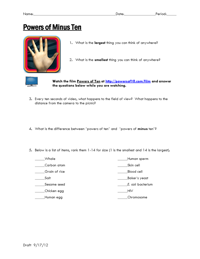
Anaphase
In this stage of mitosis, the chromosome pairs are pulled apart toward opposite ends of the cell.
They are transported to opposite ends of the cell by the fiber-like microtubules, which make up the mitotic spindle.
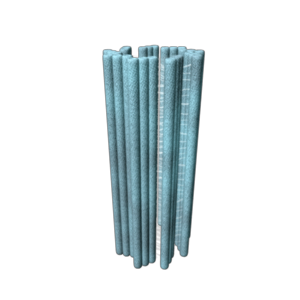
Centriole
These are structures that are shaped like cylinders, found at the center of the mitotic spindle. They are known to be involved in the organization of the spindle and are important for the process of cells splitting apart.
Each centriole is made of nine short microtubules. Scientists are not sure how they function, exactly.
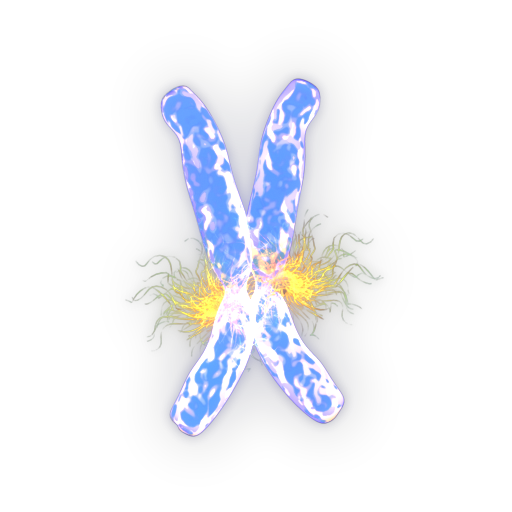
Chromosome
Each chromosome is made out of tightly coiled DNA, creating nice, neat structures that allow the cell to evenly divide up its genetic material. During mitosis, chromosome pairs are pulled apart. After mitosis, they unwind and the loose DNA fills the nucleus once again.
Chromosomes are made of DNA, and genes are special units of chromosomal DNA. Each chromosome is a very long molecule, so it needs to be wrapped tightly around proteins for efficient packaging.
Our genetic information is stored in 23 pairs of chromosomes that vary widely in size and shape. Chromosome 1 is the largest and is over three times bigger than chromosome 22. The 23rd pair of chromosomes are two special chromosomes, X and Y, that determine our sex. Females have a pair of X chromosomes (46, XX), whereas males have one X and one Y chromosomes (46, XY). NCBI's Genes and Disease
DNA
This famous molecule contains the genetic 'instructions' for all the processes of life. In humans, it it bunched up and coiled up around globby proteins to form 23 chromosome pairs. Its structure determines its 'message' � it is made up of little molecules called nucleotides. (A)denine, (G)uanine, (C)ytosine, and (T)hymine are all glued together to form long long chains of DNA.

[I]t is clear that genes are what carry our traits through generations and that genes are made of deoxyribonucleic acid (DNA). But genes themselves don't do the actual work. Rather, they serve as instruction books for making functional molecules such as ribonucleic acid (RNA) and proteins, which perform the chemical reactions in our bodies.
Proteins do many other things, too. They provide the body's main building materials, forming the cell's architecture and structural components. But one thing proteins can't do is make copies of themselves. When a cell needs more proteins, it uses the manufacturing instructions coded in DNA. NIGMS's The New Genetics
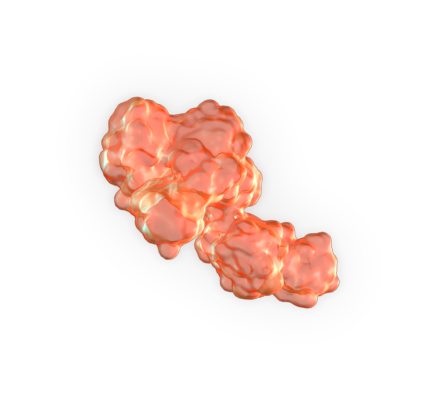
DNA Polymerase
The protein responsible for adding new molecules to the unwound, single-stranded DNA, during the process of Replication. In this way, two strands of DNA are made out of one.
This process is a little bit complicated, because the Polymerase protein can only travel one way on a single-stranded strand. On one of the strands of DNA, it works continuously. On the other, it starts and stops, resulting in chunks of DNA that have to be stitched together by other proteins.
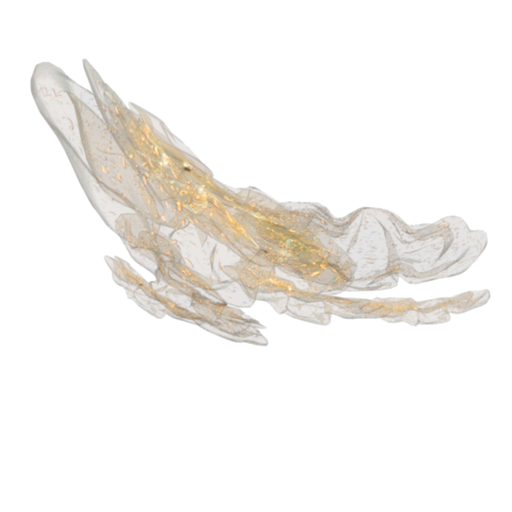
Endoplasmic Reticulum
The ER is part of a series of membranes, very much like the cell membrane itself, that are scattered throughout the cytoplasm. One variety is called 'rough' because it has ribosomes attached to it and, under the microscope, has a 'rough' appearance. The other variety, "smooth" ER, is a little bit further from the nucleus, and plays a different role in the cell.
To make a protein, ribosomes weld together chemical building blocks one by one. As naked, infant protein chains begin to curl out of ribosomes, they thread directly into the ER. In addition to having few or no ribosomes, the smooth ER has a different shape and function than the ribosome-studded rough ER.
A labyrinth of branched tubules, the smooth ER specializes in synthesizing lipids and also contains enzymes that break down harmful substances. Most cell types have very little smooth ER, but some cells - like those in the liver, which are responsible for neutralizing toxins - contain lots of it. NIGMS's Inside the Cell
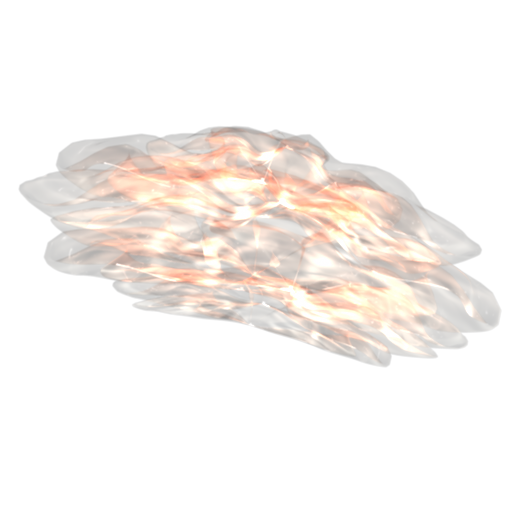
Golgi Apparatus
This organelle is part of a series of lipid membranes (like the cell membrane!!) that exist throughout the cytoplasm. It is closer to the cell membrane than the nucleus, and is involved in modifying and packing proteins.
For instance, the Golgi might alter a certain kind of protein and send it to a particular vesicle, destined to be released outside of the cell.
Like an upscale gift shop that monograms, wraps, and mails its merchandise, the Golgi receives newly made proteins and lipids from the ER, puts the finishing touches on them, addresses them, and sends them to their final destinations. One of the places these molecules can end up is in lysosomes. NIGMS's Inside the Cell

Human Hand
Human Hands are good for picking up stuff, touching things, and gesturing when you talk. They can hold tools and other hands on other humans. They can be used for petting animals and scratching an itch.
Can the principle of selection, which we have seen is so potent in the hands of man, apply under nature? I think we shall see that it can act most efficiently. Let the endless number of slight variations and individual differences occurring in our domestic productions, and, in a lesser degree, in those under nature, be borne in mind; as well as the strength of the hereditary tendency.
[T]he feet of lizards and mammals, the wings and feet of birds, no less than the hands and feet of man, all arise from the same fundamental form. Charles Darwin
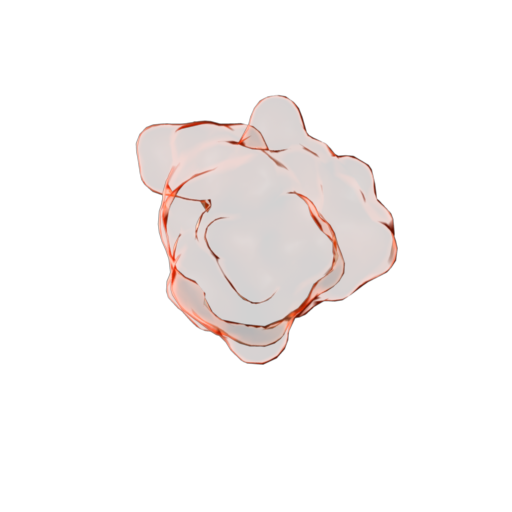
Helicase
A protein responsible for unwinding DNA or RNA strands. There are many different kinds of helicases in different kinds of living things. This particular one plays a key role in DNA Replication in humans � it unwinds the double stranded molecule so that each strand can be turned into a new double stranded molecule.
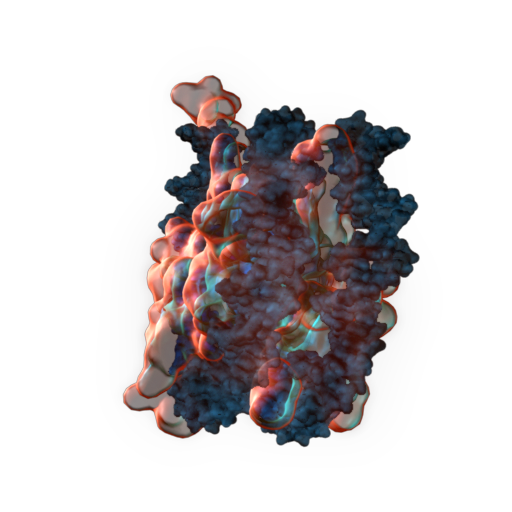
Histone
In different situations, DNA can be loose or it can be all coiled up nice and tight. These large, four-part proteins are the big protein complexes that the DNA strands wrap around. They are sort of like hose reels: they are used so the hose doesn't get all tangled.
DNA is spooled up compactly inside cells in an arrangement called chromatin. This packaging is critical for DNA to do its work. Chromatin consists of long strings of DNA spooled around a compact assembly of proteins called histones.
Flaws in the histone code have been associated with several types of cancer, and researchers are actively pursuing the development of medicines to correct such errors. NIGMS's The New Genetics
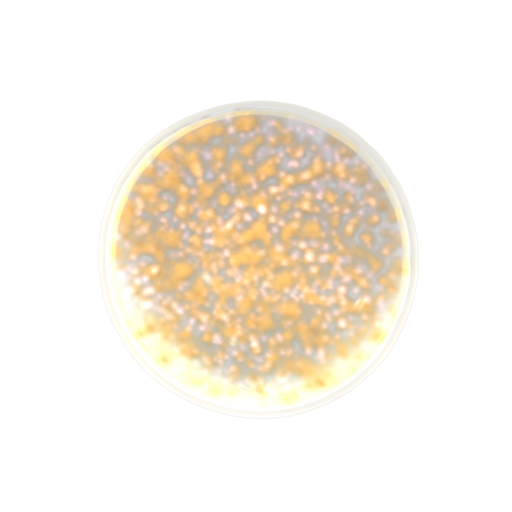
Lysosome
This organelle is a type of vesicle in the cell that contains a really acidic environment with lots of enzymes to break things down. They destroy damaged or defective proteins and organelles.
But materials aren't just melted into oblivion in the lysosome. Instead, they are precisely chipped into their component parts, almost all of which the cell recycles as nutrients or building blocks. Lysosomes also act as cellular garbage trucks, hauling away unusable waste and dumping it outside the cell. From there, the body has various ways of getting rid of it.
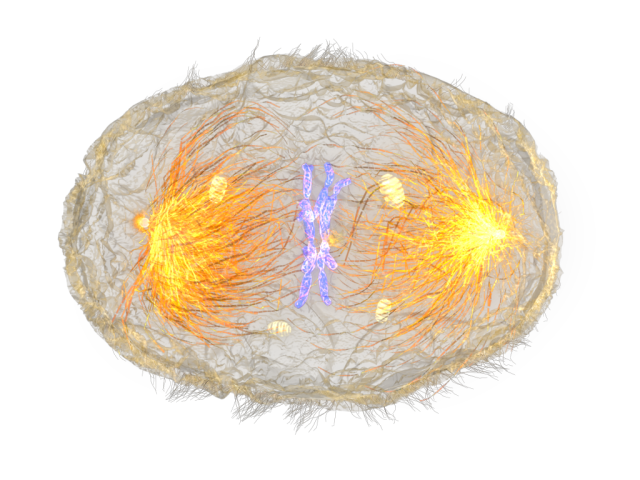
Metaphase
In this stage of mitosis, the chromosome pairs line up in the center of the cell. Also at this point, the mitotic spindle has attached to each chromosome.
At this point, the microtubules (the chain-like molecules that make up the mitotic spindle) have reached their full length.
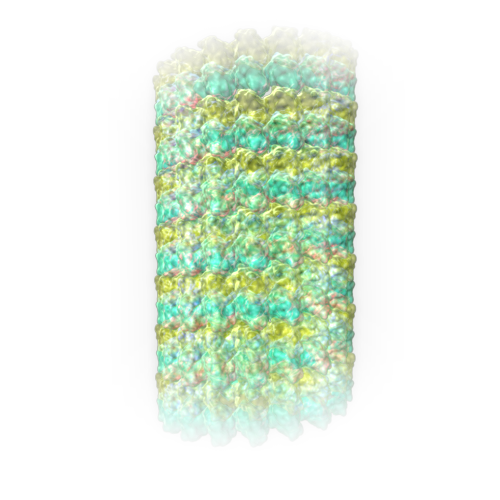
Microtubule
These are chains of proteins that can be either really short or super long. They serve a variety of purposes. For example, they make up the long fibers that pull apart chromsomes during mitosis, and they make up the cylinder-shaped centriole that is in the center of the mitotic spindle. They are the primary form of transportation within a cell. Vesicles are pulled along them like trains along railroad tracks.
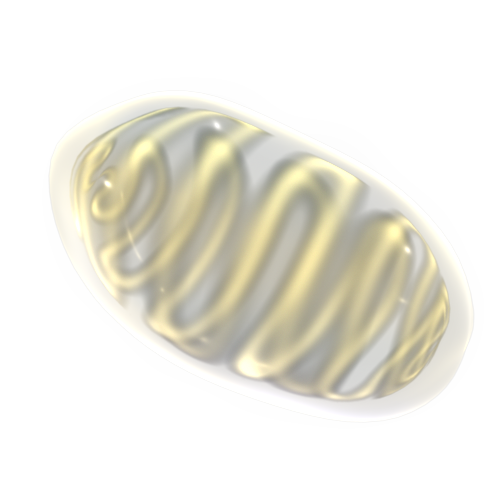
Mitochondrion
Mitochondria (plural) produce the molecule which gives us all our energy. These organelles are descended from ancient bacteria, which our first cellular ancestors 'swallowed,' back in the day. They are essentially a symbiotic organism, living within us and providing us with energy.
"Just as cyanobacteria and chloroplasts are close relatives, so are mitochondria related to free living oxygen-breathing bacteria. Mitochondria, intracellular power factories, produce chemical energy inside of the cells of all animals � and plants and fungi." Lynn Margulis
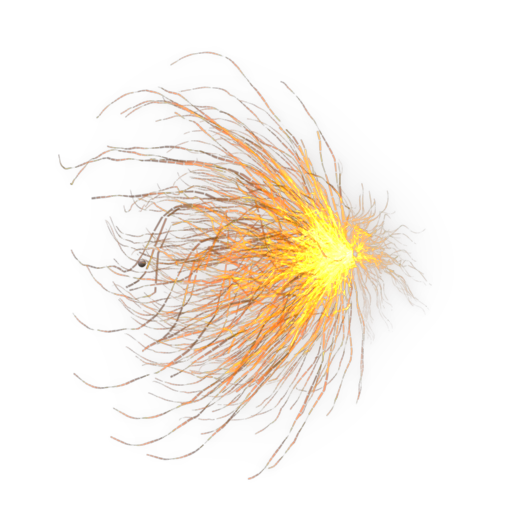
Mitotic Spindle
This structure is made of strands of microtubules, arranged into long fibers as well as short, cylinder-shaped structures called centrioles (and, also, some other proteins). Its primary function in the cell is to pull the chromosomes apart during mitotic cell division. It expands through the beginning of Mitosis, then contracts towards the end.
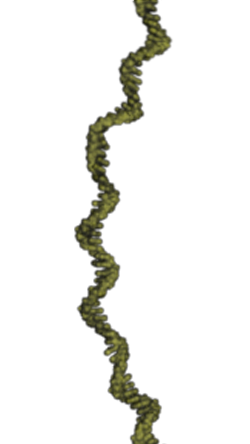
mRNA
Messenger RNA is the molecule that is basically a single-strand copy of a chunk of DNA. It is made in the cell nucleus during the process of Transcription. After Transcription, it leaves the nucleus through a pore and directs the cell to make a particular kind of protein.
RNA is quite flexible - unlike DNA, which is a rigid, spiral-staircase molecule that is very stable. RNA can twist itself into a variety of complicated, three-dimensional shapes. RNA is also unstable in that cells constantly break it down and must continually make it fresh, while DNA is not broken down often. RNA's instability lets cells change their patterns of protein synthesis very quickly in response to what's going on around them.
Today, many scientists believe that RNA evolved on the Earth long before DNA did. Researchers hypothesize - obviously, no one was around to write this down - that RNA was a major participant in the chemical reactions that ultimately spawned the first signs of life on the planet." NIGMS's The New Genetics
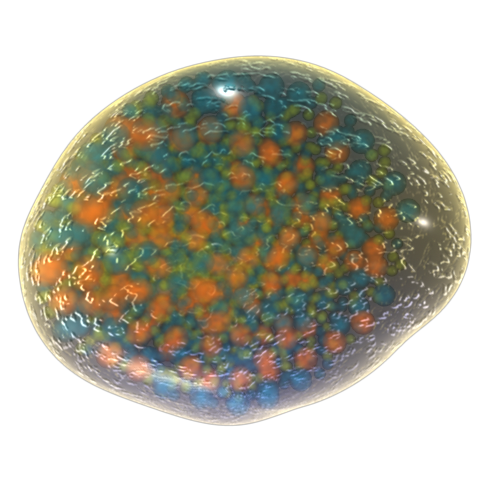
Nucleus
This huge organelle contains most of the DNA in your cells (the rest is in the mitochondria). Many different processes go on in the nucleus. The different kinds of activities depend on whether the cell is currently growing, about to divide, or just maintaining the status quo.
In this cell, chromosomes are not visible because the DNA is all unwound very loosely, filling the nucleus. The exposed, loose DNA in the nucleus can be accessed by proteins to be copied, or it can be used to create a template for making more proteins.
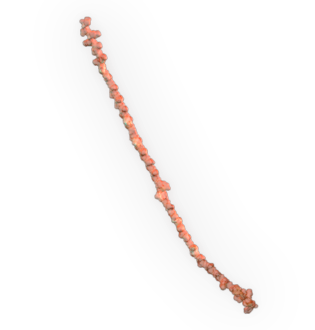
Polypeptide
A chain of amino acids. These chains fold up into bunches to form proteins. A protein can be made of one or many folded-up polypeptide chains.
Polypeptide chains are the end product of the process of Translation. They can be as short as two amino acids in length or as long as over 30,000.
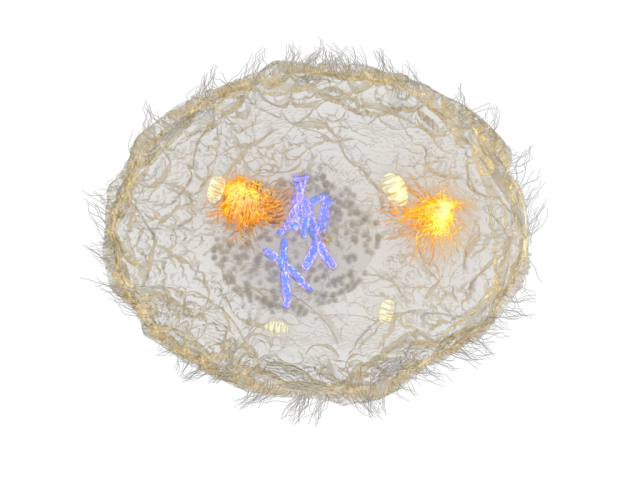
Prometaphase
In this stage of mitosis, the nucleus breaks down and the mitotic spindle starts to grow and reach out toward the chromosome pairs.
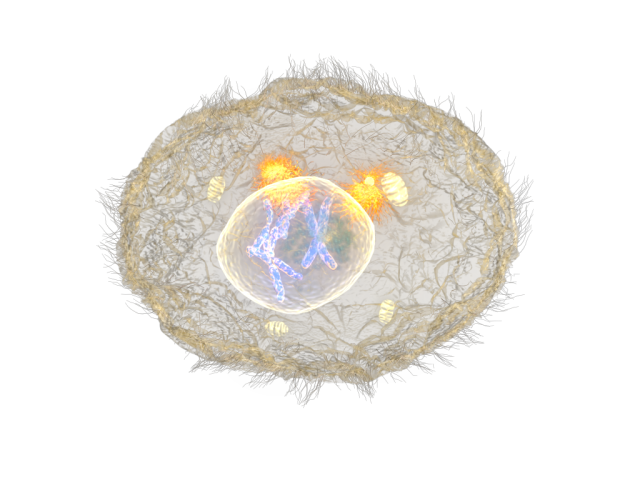
Prophase
In this stage of mitosis, loose DNA in the nucleus condenses into chromosome pairs. Also, the centrioles move to the opposite ends of the cell.
Red Blood Cell
These types of cells are found in our blood vessels and capillaries. They have a reddish hue because they are filled with a protein called Hemoglobin. Hemoglobin uses iron atoms to hold onto oxygen. Red blood cells are strange because they have no nucleus. Their only job, pretty much, is to transport oxygen around the body.

Ribosome
These massive molecules assemble proteins from amino acids. During the process of Translation, they attach and "read" a strand of mRNA. tRNAs bring amino acids, and ribosomes link them together. Ribosomes either float freely in the cytoplasm of the cell, or are attached to the endoplasmic reticulum.
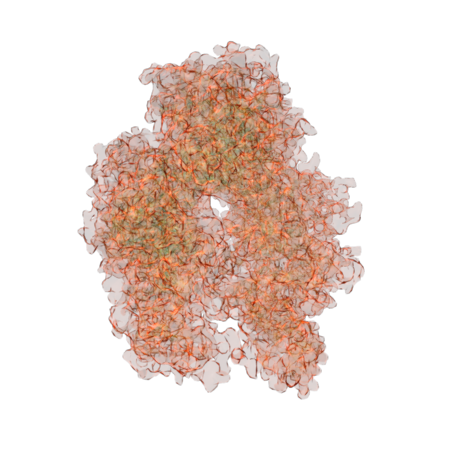
RNA Polymerase
This protein is responsible for making RNA out of DNA. During the process of Transcription, it moves along the DNA, unwinding the two strands a little bit as it goes, and making RNA.
RNA is like a reverse photocopy of DNA that can be sent outside the nucleus and into the cytoplasm, carrying DNA's essential message. RNA is made out of very similar molecules to those found in DNA.
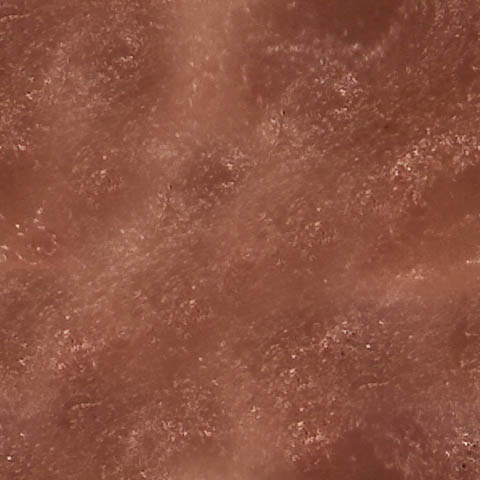
Skin
Skin is the largest human organ, and its main purpose is to keep your insides in and your outsides out. Your insides = other organs, blood, water, nutrients. The outside = bacteria, viruses, harmful chemicals, radiation, and unpleasant temperatures.
The skin is the largest organ in the body - both in weight and in surface area - and separates the body's internal environment from the external environment.
The skin has many diverse roles. It acts as a channel of communication with the outside world; protects the body from water loss; uses specialized pigment cells, called melanocytes, to protect the body from ultraviolet radiation; participates in calcium homeostasis by contributing to the body's supply of vitamin D; and helps regulate body temperature and metabolism. NCBI's Genes and Disease
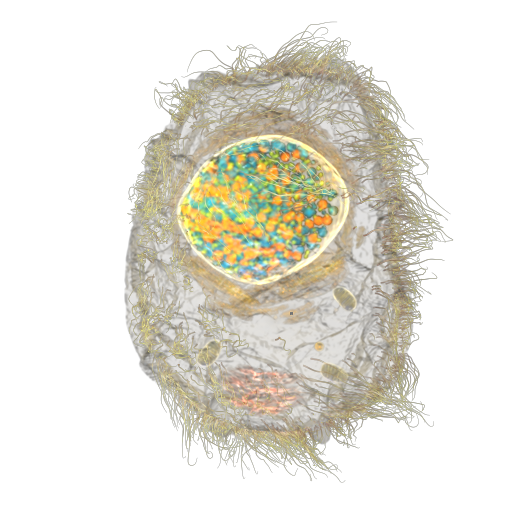
Skin Cell
Mature skin cells don't divide to replace old or damaged skin. Instead, they are replaced by stem cells.
As stem cells divide and become skin cells, the mature skin cells get closer and closer to the surface of the skin, eventually dying and flaking off.

Stem Cell
This skin stem cell is currently in Interphase, which means that it is NOT going through mitosis, but is doing other things like Replicating its DNA or making the proteins needed to go through cell division.
Stem cells are located at the bottom layer of the human skin, and continuously divide, making more and more cells. As more are made, the younger cells push the older cells towards the surface of the skin, which mature into proper Skin Cells.
Telophase
In this stage of mitosis, the cell membrane closes in and splits the cell into two identical cells. The chromosomes uncoil into loose DNA and the cell nucleus re-forms.
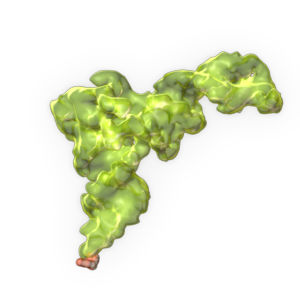
tRNA
Transfer RNA, like Messenger RNA, is made from DNA. Unlike mRNA, it does not contain a code for making proteins. Instead, it folds up into a little molecule that carries amino acids.
There are 20 slightly different kinds of tRNA which bind 20 slightly different kinds of amino acids.
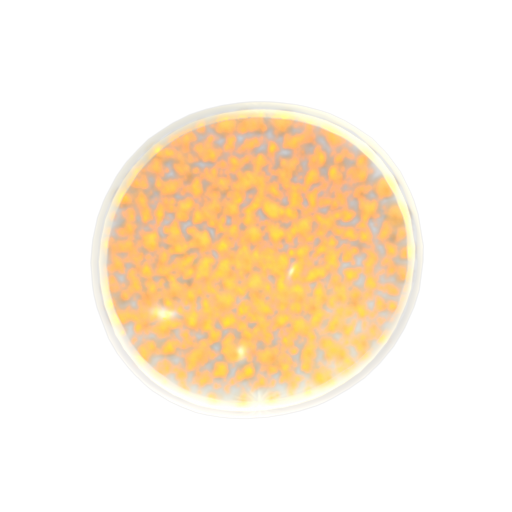
Transport Vesicle
A vesicle is a round bubble-like part of the cell that is made of the same kind of membrane material as the cell membrane, the endoplasmic reticulum, and the golgi body.
Vesicles can be used to transport things around the cell, exporting things from the cell, storage, and for special purposes like getting rid of waste.
Carbon
This atom is the most essential component of all the molecules in your body. If a molecule is called "organic," this means that it has Carbon in it. Carbon is versatile and can form sheets, chains, and many other structures. Diamonds are made of carbon.
Oxygen
This reactive atom drives many of the molecular processes that happen in your body. Oxygen exists as a gas in the air you breathe, but it is also present in many of the structures of life.
Nitrogen
This atom is found primarily the amino acid molecules which make up proteins. Nitrogen is also an essential part of the nucleotides found in DNA (You might know them by their abbreviations: A, G, T, and C).
Phosphorus
This is one of the larger atoms found in organic molecules. It is found in DNA, RNA, ATP, and the molecules that make up cell membranes.
Hydrogen
This atom is THE MOST common atom, period. It is the smallest, lightest, and most versatile element. Together with Oxygen, it makes up water. It is part of every structure in your body.

